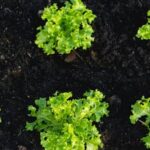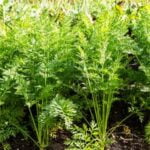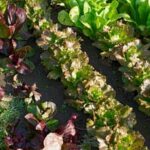Interested in creating a thriving vegetable garden in limited space? Look no further than vegetable container gardens ideas. Growing your own fresh produce can be easily achieved with the right knowledge and creativity. In this article, we will delve into the concept of vegetable container gardening, explore different design ideas, and offer practical tips for soil, fertilization, watering, maintenance, and pest management. Whether you have a small urban balcony or a spacious backyard, you can cultivate delicious vegetables in containers.
Container gardening has gained popularity due to its versatility and accessibility. It allows individuals to grow a variety of vegetables even in limited space. From tomatoes and peppers to lettuce and carrots, there are numerous options for cultivating vegetables in containers. The benefits of vegetable container gardening extend beyond space-saving advantages; it also offers opportunities for creative designs and efficient maintenance practices.
In the following sections, we will discuss the best containers for vegetable gardening, provide insights on choosing suitable vegetables for container gardens, explore innovative design ideas, and offer tips for soil and fertilization. Furthermore, we will delve into proper watering techniques, effective maintenance practices, strategies for pest and disease management, as well as harvesting guidelines. By the end of this article, you’ll be equipped with all the information you need to establish a productive and enjoyable vegetable container garden.
Best Containers for Vegetable Gardening
When it comes to vegetable container gardens, choosing the right container is crucial for the success of your garden. There are several types of containers that are suitable for vegetable gardening, each with its own advantages and considerations.
One of the most popular choices for vegetable container gardens is the classic terracotta pot. These porous pots allow for good air circulation to the roots, preventing waterlogging and promoting healthy plant growth. However, they do tend to dry out quickly, so frequent watering may be necessary. Another option is plastic containers, which are lightweight and retain moisture well, making them a low-maintenance choice for beginner gardeners.
For those looking for more unconventional options, consider using grow bags or fabric pots. These containers are lightweight, breathable, and have excellent drainage properties which can promote strong root growth. Additionally, self-watering containers are a great choice for busy individuals as they provide a reservoir that allows plants to draw up water as needed.
When selecting containers for your vegetable garden, it’s important to consider the size and needs of the specific vegetables you plan to grow. For example, larger plants such as tomatoes or peppers will require larger containers to accommodate their extensive root systems. Leafy greens like lettuce or spinach can thrive in smaller containers and even window boxes.
By carefully matching your vegetables with the appropriate containers, you can set yourself up for a successful and bountiful harvest from your vegetable container garden. With the right knowledge about different types of containers suitable for different types of vegetables, you can get started on creating your very own vibrant and thriving vegetable container garden.
Choosing the Right Vegetables for Container Gardening
When it comes to vegetable container gardens, choosing the right vegetables to grow is crucial for a successful and bountiful harvest. Not all vegetables are suited for container gardening, so it’s important to select varieties that thrive in this environment. Here are some ideas for the best vegetables to grow in your container garden:
1. Tomatoes: Tomatoes are one of the most popular choices for container gardening. Compact varieties such as cherry or patio tomatoes are well-suited for pots and provide a steady supply of delicious fruit throughout the growing season.
2. Peppers: Bell peppers, chili peppers, and sweet peppers can all be grown in containers with relative ease. They require little space and can be quite productive when provided with ample sunlight and proper care.
3. Herbs: Herbs like basil, thyme, mint, and parsley are perfect candidates for container gardening. They not only add flavor to your cooking but also look beautiful on your patio or balcony.
4. Lettuce and Salad Greens: Leafy greens like lettuce, spinach, arugula, and kale do well in containers and can be harvested continuously for fresh salads.
5. Beans: Bush beans or pole beans can successfully grow in large containers or trellised pots, providing a generous crop of tasty pods.
When selecting vegetables for your container garden, consider the space available, the amount of sunlight your containers receive, and any specific climate conditions in your area. It’s also important to research the root depth and spacing requirements of each vegetable to ensure they have enough room to grow properly.
With these vegetable container gardens ideas in mind, you can create a diverse and productive mini-garden right at home.
Container Garden Design Ideas
When it comes to vegetable container gardens ideas, the design aspect is crucial for both functionality and aesthetic appeal. One popular design idea is using vertical space by incorporating hanging containers or trellises for climbing vegetables such as tomatoes, cucumbers, or pole beans. This not only maximizes limited space but also adds visual interest to the garden.
Another innovative design concept for vegetable container gardens is the use of repurposed items such as wooden crates, old wheelbarrows, or even unused furniture as planters. Not only does this add a unique and eclectic charm to the garden, but it also promotes sustainability by giving new life to old items.
For a more organized and structured look, creating a symmetrical layout with uniform containers can be visually pleasing. This can be achieved by arranging identical pots in a grid pattern or using matching containers along pathways or borders. Additionally, mixing different sizes and shapes of containers can add dimension and texture to the garden design.
| Design Concept | Description |
|---|---|
| Vertical Gardening | Incorporating hanging containers and trellises for climbing vegetables. |
| Repurposed Items | Using old wooden crates, wheelbarrows, or furniture as unique planters. |
| Symmetrical Layout | Creating an organized look with uniform containers arranged in a grid pattern or along pathways. |
Tips for Soil and Fertilization
When it comes to vegetable container gardens, the soil you use is crucial to the success of your plants. The best soil for container gardening is lightweight, well-draining, and nutrient-rich. A good potting mix specifically designed for containers is an excellent choice as it provides the necessary aeration and drainage for healthy root growth. You can also create your own potting mix by combining equal parts of peat moss, perlite, and compost.
Adding organic matter such as compost to your container soil can improve its fertility and structure. Compost provides essential nutrients to the plants while enhancing the soil’s ability to retain water. This is especially beneficial in small containers where moisture retention can be a challenge. Additionally, consider adding slow-release organic fertilizers to your soil mix to provide a steady supply of nutrients throughout the growing season.
It’s important to regularly check the condition of your soil as it may become compacted over time, affecting drainage and root development. If you notice that the soil in your vegetable container garden is no longer providing adequate aeration or drainage, consider repotting your plants into fresh soil.
| Tips for Soil and Fertilization | Vegetable Container Gardens Ideas |
|---|---|
| Choosing lightweight, well-draining potting mix | Experimenting with different types of containers suitable for vegetable gardening |
| Adding organic matter like compost for improved fertility | List of vegetables that thrive in container gardens |
| Regularly checking and repotting if necessary | Creative and innovative designs for vegetable container gardens |
Watering and Maintenance
When it comes to vegetable container gardens, proper watering and maintenance are crucial for the health and productivity of the plants. Here are some tips to ensure that your vegetable container garden thrives:
- Choose the Right Containers: Select containers with good drainage to prevent waterlogging, which can lead to root rot. Make sure the containers are large enough to accommodate the mature size of the vegetables you plan to grow.
- Watering Techniques: One of the most important aspects of maintaining a vegetable container garden is proper watering. The frequency of watering will depend on factors such as the type of vegetables, weather conditions, and soil composition. Generally, it’s best to water when the top inch of soil feels dry to the touch.
- Use Mulch: Applying a layer of organic mulch, such as straw or wood chips, can help retain moisture in the soil and reduce evaporation, especially during hot weather.
In terms of maintenance for your vegetable container garden, regular care is essential for healthy plant growth. Here are a few maintenance practices that can help maximize your harvest:
- Weeding: Keep an eye out for weeds in your containers and remove them promptly. Weeds compete with vegetable plants for nutrients and water.
- Pruning and Thinning: Regularly prune back overgrown foliage and thin out crowded plants to improve air circulation and prevent disease. This is particularly important for vining vegetables like tomatoes and cucumbers.
- Fertilization: Container-grown vegetables require regular fertilization since nutrients in the potting mix can deplete faster than those in garden soil. Use a balanced liquid fertilizer or slow-release granular fertilizer according to package instructions.
By following these watering and maintenance tips, you can ensure that your vegetable container garden remains healthy and productive throughout the growing season. With proper care, you’ll be able to enjoy a bountiful harvest of fresh vegetables right from your own patio or balcony.
Pest and Disease Management
Preventative Measures
One of the key aspects of maintaining a successful vegetable container garden is preventing pests and diseases from taking hold in the first place. There are several strategies that can be implemented to reduce the risk of infestations and infections. Choosing disease-resistant varieties of vegetables, practicing proper crop rotation, and maintaining good hygiene in and around the containers can all contribute to healthier plants less susceptible to diseases and pests.
Natural Remedies
When faced with pest or disease issues in your vegetable container garden, many gardeners prefer to use natural remedies as opposed to chemical solutions. Introducing beneficial predators such as ladybugs or lacewings, using homemade insecticidal soaps, or applying neem oil are all effective methods for managing pests without resorting to harsh chemicals. Similarly, using organic fungicides like copper sprays or sulfur dust can help combat common plant diseases without negatively impacting the environment or the health of your plants.
Early Identification and Intervention
Regularly inspecting your vegetable plants for any signs of pests or diseases is crucial for early intervention. Catching issues early allows for prompt action, which often results in more successful treatment outcomes. Whether it’s removing and disposing of affected plant parts, introducing predatory insects, or spraying natural remedies, quick action can prevent problems from spreading throughout your container garden.
By implementing these pest and disease management strategies in your vegetable container garden, you can protect your crops from potential devastation while also minimizing the need for harsh chemicals that may harm the environment. With vigilance and care, you can enjoy a bountiful harvest from your thriving container garden.
Harvesting and Enjoying the Fruits of Your Labor
When it comes to vegetable container gardens, the joy of harvesting and enjoying the fresh produce is a rewarding experience. Whether you are growing herbs, tomatoes, lettuce, or peppers, there is nothing quite like picking your own vegetables from your container garden and using them in your favorite recipes. In this section, we will discuss the best practices for harvesting and enjoying the fruits of your labor in your vegetable container garden.
When to Harvest
Knowing when to harvest your vegetables is crucial for ensuring that they are at their peak flavor and nutritional value. Different vegetables have different indicators for when they are ready to be harvested.
For example, tomatoes should be picked when they are fully ripe and have reached their full color and size, while lettuce can be harvested as soon as the leaves reach a desirable size. Understanding these indicators for each type of vegetable in your container garden is essential for successful harvesting.
How to Harvest
Proper harvesting techniques are also important to ensure that you do not damage the plant or reduce its productivity. Using sharp scissors or pruners to cut the vegetables from the plant can help prevent any unnecessary stress on the plant and promote continued growth and production. Additionally, being gentle when handling delicate vegetables such as berries or herbs can help avoid bruising or damaging the produce.
Enjoying Your Fresh Produce
After harvesting your home-grown vegetables from your container garden, it’s time to enjoy them in a variety of ways. From creating vibrant salads with freshly picked lettuce and cherry tomatoes to making homemade sauces with ripe peppers and herbs, there are endless possibilities for incorporating your fresh produce into delicious meals. Not only does it add incredible flavor to your dishes, but there is also a sense of satisfaction knowing that you grew these vegetables yourself.
Conclusion
In conclusion, vegetable container gardening offers a versatile and convenient way to grow your own fresh produce, even in limited spaces. The benefits of this method are numerous, from the ability to control soil quality and drainage to the flexibility of moving containers to optimize sunlight exposure. With the right containers, suitable vegetables, and proper care, anyone can create a thriving vegetable container garden.
When it comes to vegetable container gardens ideas, the possibilities are endless. From using traditional pots and hanging baskets to repurposing unconventional items like old tires or wooden crates, there are countless creative design options to explore. Whether you’re looking to add greenery to a small urban balcony or want a convenient way to grow your favorite vegetables right outside your kitchen door, vegetable container gardens offer an appealing solution.
Ultimately, the world of vegetable container gardening is ripe with potential for both seasoned gardeners and those new to growing their own food. With careful consideration of containers, suitable vegetables, soil and fertilization needs, watering techniques, pest management strategies, and harvesting practices, anyone can enjoy the satisfaction of bringing garden-fresh vegetables from their very own doorstep to their table.
So why not give it a try? Let your creativity flourish along with your crops as you embark on your own vegetable container gardening journey.
Frequently Asked Questions
What Vegetables Grow Well Together in a Container?
Some vegetables that grow well together in a container are tomatoes, peppers, and basil. These three work well together because they have similar sunlight, water, and soil requirements, making them compatible planting companions.
What Vegetables Are Good to Grow in Containers?
Many vegetables are good to grow in containers, including lettuce, carrots, radishes, and spinach. These vegetables have shallow roots and don’t require a lot of space, making them ideal for growing in pots or other small containers.
How Deep Should a Container Vegetable Garden Be?
The depth of a container for a vegetable garden depends on the type of vegetable being grown. In general, the container should be at least 12 inches deep to accommodate most vegetable plants’ root systems. However, deeper containers may be necessary for vegetables with longer roots such as carrots or potatoes.

If you’re looking to get into vegetable gardening, or are just looking for some tips on how to make your current garden better, then you’ve come to the right place! My name is Ethel and I have been gardening for years. In this blog, I’m going to share with you some of my best tips on how to create a successful vegetable garden.





